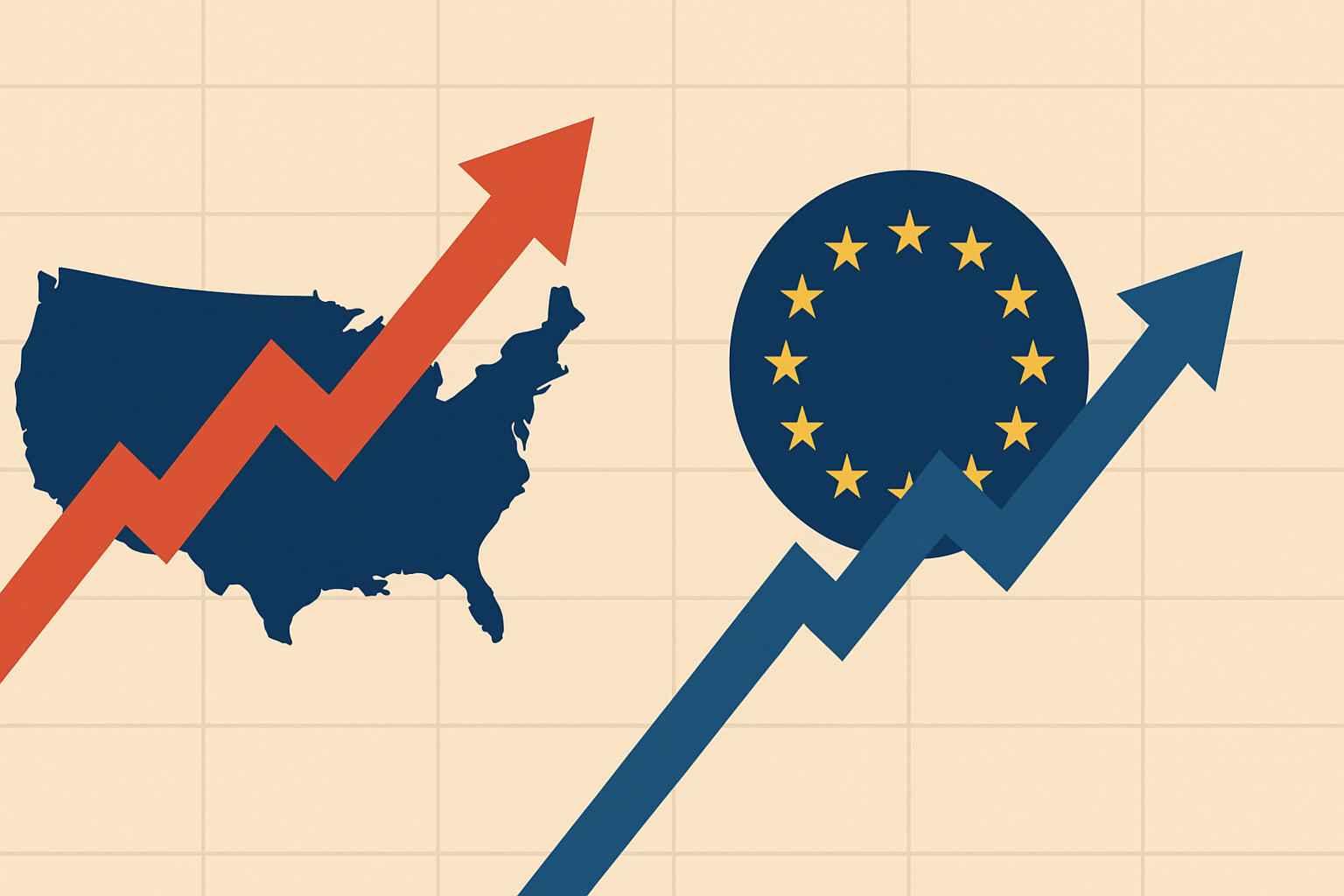A recent surge in US equities has cast doubt on the widely expected investor rotation toward European markets, as Wall Street rebounds sharply from tariff-driven turbulence.
The S&P 500 index climbed 10% in the second quarter of 2025, significantly outperforming Europe’s Stoxx 600, which gained less than 2%. This sharp performance gap has disrupted expectations that President Donald Trump’s erratic tariff policies would push global investors toward European assets, where optimism had been rising on the back of large-scale fiscal stimulus efforts.
Instead, capital has flowed back into familiar territory: US tech giants. Nvidia reached a new record high, while Palantir — chaired by Peter Thiel — jumped over 50% in Q2. Meanwhile, Coinbase doubled as enthusiasm for crypto-related stocks reignited.
“This quarter marked a return to the old playbook,” said Shep Perkins, Chief Investment Officer at Putnam Investments. The rally has also been fueled by robust US job numbers, stable unemployment, and record corporate share buybacks — boosting investor sentiment despite ongoing trade tensions.
Europe’s Underperformance Raises Concerns
Despite a 7% year-to-date rise in the Stoxx Europe 600 — slightly ahead of the S&P 500’s 5% — recent underperformance has alarmed investors who expected Europe to benefit more decisively from structural reforms and Germany’s ambitious €1 trillion defense and infrastructure stimulus plan.
“The issue with Europe has always been earnings,” explained Dec Mullarkey of SLC Management. “Even if you question US stock valuations, they’re supported by solid fundamentals. Europe, by contrast, hinges more on speculative follow-through from policy promises.”
That optimism has yet to materialize in hard economic data. In fact, the European Commission recently revised down its growth forecast, citing weakening consumer and business confidence following renewed US tariff threats.
Investors Eye Global Diversification — But Cautiously
While American equities have narrowed the gap, broader questions remain. The US dollar is still down 13% against the euro this year, and US Treasuries have faced pressure from mounting national debt. Some institutional investors argue that the era of global diversification is far from over.
A recent Goldman Sachs note pointed to stretched US valuations, even after accounting for stronger return-on-equity metrics. “The era of diversification has begun,” the analysts stated, “and we believe it still has room to run.”
An equal-weighted version of the S&P 500 has underperformed the traditional market-cap-weighted index in 2025, signaling that the rally remains concentrated in a few mega-cap names. This has stalled the long-anticipated broadening of equity returns beyond Big Tech.
Trade War Still a Wild Card
Uncertainty looms as Trump’s 90-day tariff pause nears expiration. Ongoing negotiations with global partners may determine whether a fresh wave of levies re-ignites market volatility.
“Over the long term, slower US economic growth and Europe’s push for fiscal unity may help balance the transatlantic performance divide,” said Luca Paolini, Chief Strategist at Pictet Asset Management. However, he cautioned against overcorrection: “The truth likely lies in the middle — the US is not paradise, and Europe is not a disaster.”
As investors weigh earnings quality against macro policy bets, the rotation from the US to Europe remains a possibility — but with less certainty than before.


